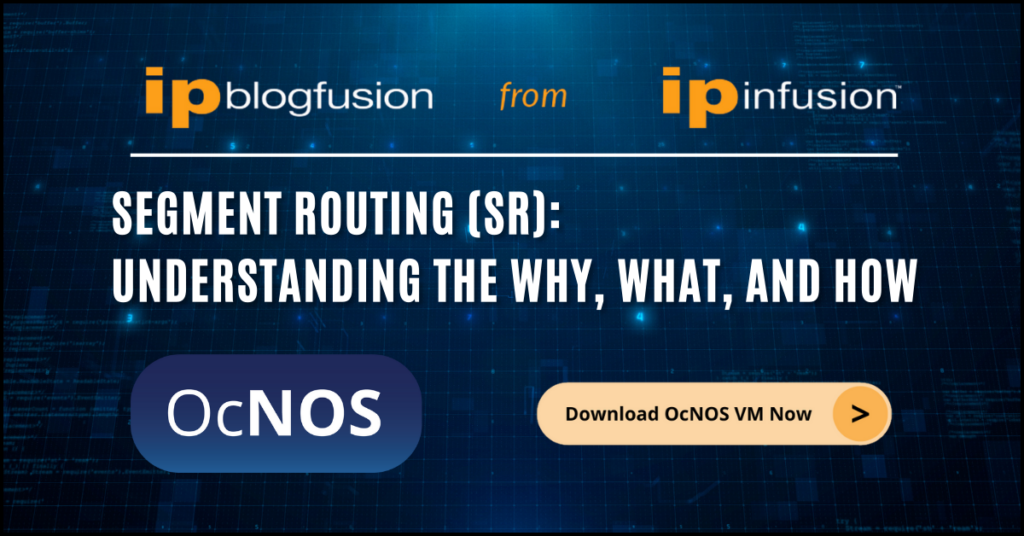In the world of networking, evolution is constant, driven by the ever-growing demands for simplicity, scalability, and operational efficiency. Segment Routing (SR) emerges as a promising solution to address the shortcomings of traditional MPLS protocols like LDP/RSVP-TE. But the question here is why the shift? And what exactly is Segment Routing?
Why Segment Routing?
Traditional MPLS protocols have undoubtedly served as the backbone of networking, offering various Virtual Private Network (VPN) services. However, the complexity of control plane protocols, such as LDP and RSVP-TE, coupled with scalability challenges, has led to operational headaches for service providers. LDP-IGP synchronization issues and the costly bandwidth reservations associated with RSVP-TE have made it clear that a simpler, more scalable solution is needed.
Segment Routing (SR)
Segment Routing offers a fresh approach to packet forwarding, simplifying network operation and scalability while retaining the benefits of MPLS. Unlike traditional MPLS protocols, SR does not require separate signaling components like LDP/RSVP-TE, leading to streamlined architecture and reduced hardware requirements. With SR, TE can be implemented without additional signaling, allowing for more scalable and cost-effective solutions.
Benefits of SR
Segment Routing introduces source-based routing, where nodes choose specific paths for packet forwarding by inserting an ordered list of segments. This approach offers enhanced packet forwarding behavior, allowing networks to transport packets through tailored paths based on application requirements. Moreover, SR seamlessly integrates with existing MPLS infrastructure, making it suitable for brownfield deployments and SDN-ready networks.
Implementation of SR
The implementation of SR leverages enhancements to link-state Interior Gateway Protocols (IGPs) like OSPF and ISIS to distribute segment routing information. In an SR network, label distribution is performed by IGPs, eliminating the need for separate signaling protocols like LDP or RSVP-TE. This streamlined approach not only simplifies network operation but also enables native Fast Reroute (FRR) capabilities for efficient fault recovery.
Types of Segments in SR
SR recognizes various types of segments, including Global Segments and Local Segments, each serving specific functions within the network. From IGP Prefix Segments for global routing to IGP Adjacency Segments for local link descriptions, SR offers flexibility and granularity in routing decisions.
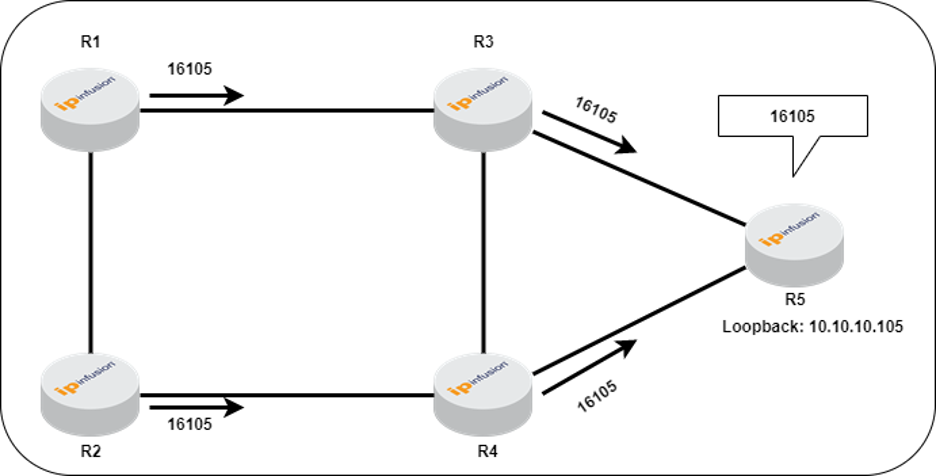
Figure 1: Prefix Segment
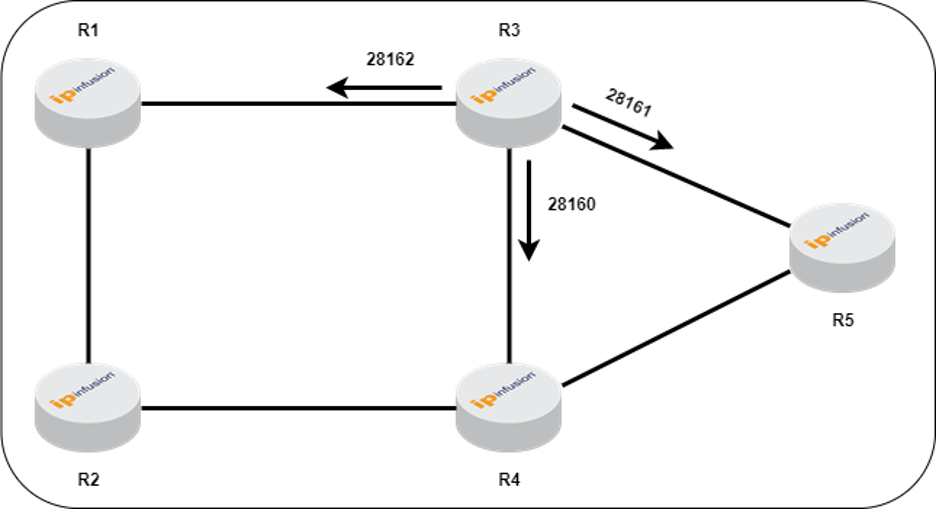
Figure 2: Adjacency Segment
SR Global Block Planning
Segment Routing Global Block (SRGB) defines the range of labels reserved for SR within an MPLS data plane. By assigning a consistent SRGB across network domains, MPLS forwarding entries are simplified, easing operations and troubleshooting.
Below are considerations to bear in mind when altering the SRGB in OcNOS, either globally or within the IGP configuration:
The assignment of the preferred SRGB relies on the availability of the desired pool. Should there be any conflict or if a protocol is already utilizing any label or pool of labels within the SRGB range, the allocation of SRGB will not proceed, and an error message will appear.
In cases where SRGB isn’t configured within an IGP instance but segment-routing MPLS configuration is set up, any modifications to the global SRGB configuration will only take effect at the IGP instance level once the user toggles the segment-routing MPLS configuration.
The maximum permitted block size for SRGB is 262143, which corresponds to 25% of the complete label pool.
We cannot set an SRGB for an IGP instance that falls outside the globally configured SRGB range, (or the default SRGB range if no specific SRGB is configured). Attempting to do so will result in an error.
The SRGB range must be configured as a non-overlapping range for each IGP instance and for each IGP protocol. IGP protocols are required to utilize SRGB ranges within the globally configured SRGB value, or the default SRGB value if no global SRGB is configured.
Before making any changes to the SRGB range, it’s necessary to disable Segment Routing.
Removing a globally configured SRGB is not possible if any IGP instance has locally configured SRGB and is actively being used.
We can have SRGB with four scenarios:
Scenario 1: Using the default SRGB
Default SRGB is [16,000-23,999]
No manual configuration required, just enable SR under IGP (ISIS)
Running configuration and validation:

First command: “To verify whether any global SRGB configuration has been manually set up, execute the ‘show running-config segment-routing’ command. In our scenario, no manual configuration has been made.”
Second command: “To check if there’s any SRGB configuration under the IGP, specifically ISIS, use the command ‘show running-config router isis | include isis|segment’. In our case, no SRGB configuration is present.”

Here, we examine the SRGB allocation by analyzing the output of the “show isis database” command. This output provides information on the SRGB Base SID and SRGB Range.
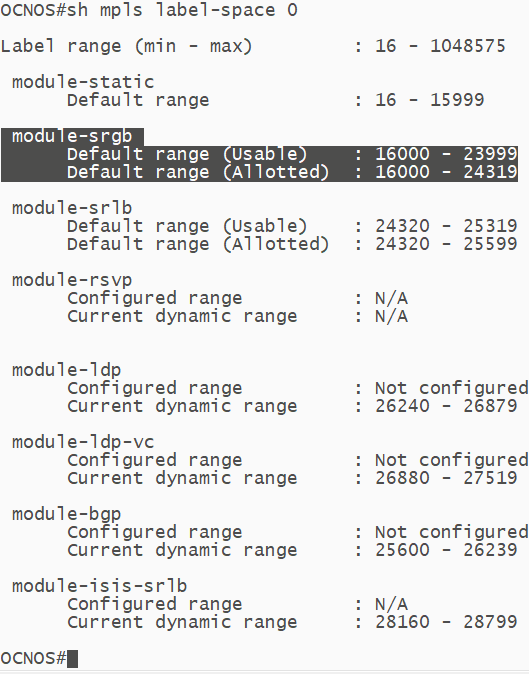
The “show mpls label-space 0” command provides information on the default allocation of various label pools to different protocols.
Scenario 2: Using SRGB global configuration only
Running configuration and validation:

Here, we have the SRGB configured globally, but it’s not specifically configured under IGP. Consequently, the IGP will utilize the global SRGB range.

This indicates that the SRGB starts from 30000 and spans a range of 4000.
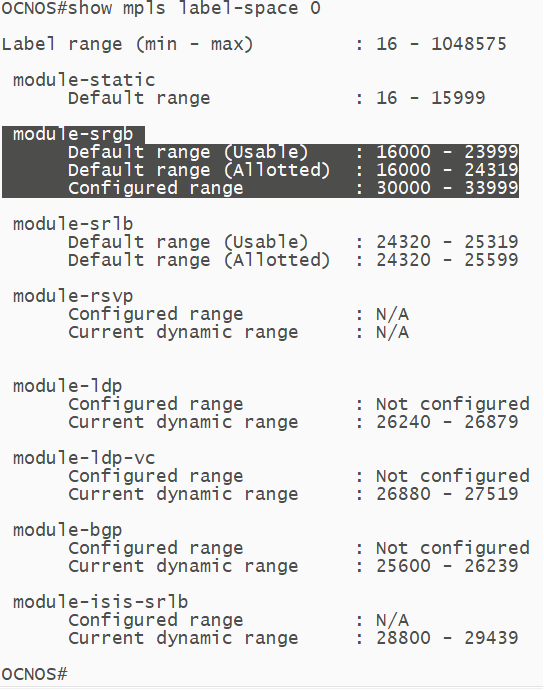
This indicates the configured range of SRGB in addition to the default label pool from different protocols
Scenario 3: Using SRGB configuration under IGP (ISIS) only
Running configuration and validation:

Globally, we have the default SRGB, while under the IGP, a smaller SRGB range is configured, derived from the default SRGB range.

This indicates the SRGB applied to the IGP
Scenario 4: Using SRGB configuration globally as well as under IGP
Running configuration and validation:

When SRGB is configured both globally and under IGP, the IGP configuration takes precedence.

This indicates the SRGB utilized by the IGP.
Conclusion
Segment Routing represents a paradigm shift in networking, offering simplicity, scalability, and operational efficiency. By encoding forwarding state into packet headers, SR enables tailored packet forwarding paths while reducing operational complexity. With its seamless integration with existing MPLS infrastructure and enhanced routing capabilities, Segment Routing paves the way for a new era of network architecture.
In summary, Segment Routing is not just a technology; it’s a transformative approach to networking that addresses the challenges of today’s complex networks while paving the way for future innovations.
Read our blogs on this topic:
Segment Routing Extension with IGP (IS-IS) in OcNOS
Contact us today to learn how OcNOS can offer Segment Routing for your network.

Suraj Kumar Singh is Senior Solution Lead at IP Infusion.


